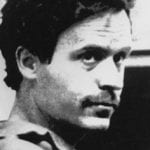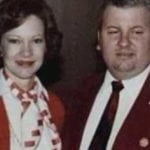 Our World
Our World  Our World
Our World  Weird Stuff
Weird Stuff 10 Fascinating Facts You Might Not Know About Snow
 Miscellaneous
Miscellaneous Top 10 Things Crypto Was Supposed to Change & What Actually Did
 History
History 10 Huge Historical Events That Happened on Christmas Eve
 Music
Music 10 Surprising Origin Stories of Your Favorite Holiday Songs
 History
History 10 Less Than Jolly Events That Occurred on December 25
 Weird Stuff
Weird Stuff 10 Funny Ways That Researchers Overthink Christmas
 Politics
Politics 10 Political Scandals That Sent Crowds Into the Streets
 Weird Stuff
Weird Stuff Ten Bizarre Facts About The Doge Meme
 Our World
Our World 10 Ways Your Christmas Tree Is More Lit Than You Think
 Our World
Our World 10 Archaeological Discoveries of 2025 That Refined History
 Weird Stuff
Weird Stuff 10 Fascinating Facts You Might Not Know About Snow
 Miscellaneous
Miscellaneous Top 10 Things Crypto Was Supposed to Change & What Actually Did
Who's Behind Listverse?

Jamie Frater
Head Editor
Jamie founded Listverse due to an insatiable desire to share fascinating, obscure, and bizarre facts. He has been a guest speaker on numerous national radio and television stations and is a five time published author.
More About Us History
History 10 Huge Historical Events That Happened on Christmas Eve
 Music
Music 10 Surprising Origin Stories of Your Favorite Holiday Songs
 History
History 10 Less Than Jolly Events That Occurred on December 25
 Weird Stuff
Weird Stuff 10 Funny Ways That Researchers Overthink Christmas
 Politics
Politics 10 Political Scandals That Sent Crowds Into the Streets
 Weird Stuff
Weird Stuff Ten Bizarre Facts About The Doge Meme
 Our World
Our World 10 Ways Your Christmas Tree Is More Lit Than You Think
10 Disturbing Facts About Serial Killer Ivan Milat, The Monster Who Inspired Wolf Creek
Ivan Milat, known as ‘The Backpacker Killer’, is an Australian serial killer responsible for the brutal murders of 7 young backpackers in the Belanglo State Forest, southwest of Sydney. Many of his victims were tourists expecting an adventure of a lifetime but since the gruesome discovery of their remains in 1992, it was clear they had fatally crossed paths with a twisted monster along the way.
After his arrest and conviction, Milat has become a part of Australia’s folklore—his violent crimes inspiring horror movies and chilling campfire tales. These are the most disturbing facts about his twisted crimes and legacy of true evil.
10 He Inspired The Horror Movie Wolf Creek
Most horror fans will be familiar with the factually based 2005 film ‘Wolf Creek‘. Three backpackers venture out to Wolf Creek National Park in the Australian Outback but their joyful trip comes to an end when they find that the car won’t start. They then meet a local bushman and the rest plays out as scenes of horrific violence and torture. ‘Wolf Creek’ was a box office hit mainly due to the added fear factor of the “based on true events” card that flashes up at the beginning of the film and drew a lot of attention to the real-life murders of backpackers at the hands of Ivan Milat.
The film’s director, Greg McClean, wanted to show the darker side of Australia, as he explained, “The Australian culture is bright sunny beaches, ‘Crocodile Dundee’ and all that kind of shit, and the shadow side of that is xenophobia, homophobia, sexism, racism, all that kind of stuff that we squash down but is alive and well”.[1]
9 Early Criminal Career

Born in Guildford, New South Wales, Australia, in 1944, Milat was one of 14 children. His Yugoslavian-Australian migrant parents raised their children to be disciplined and they had all received a good education. However, by age 17, a young Milat was already known to local police and he landed himself in juvenile detention where he served 18 months for theft. Only two months after his release, he was arrested for driving a stolen vehicle and sentenced to 2 years’ hard labour.
In 1971, Milat faced abduction and rape charges as two female hitchhikers claimed they were attacked by him when he was armed with a knife. He was acquitted on all charges as the prosecution failed to make a convincing argument against him. In 1975, he met his future wife, 16-year-old Karen Duck, they would eventually divorce as she claimed he was violent throughout their marriage and also described him as “gun crazy.” It was only a matter of time before Milat’s crimes became much worse.[2]
8 Brutal Backpacker Murders

On September 19th, 1992, an orienteering group in Belangalo State Forest made the gruesome discovery of two bodies in an area known as Executioners Drop. The bodies were identified as British backpacker 21-year-old Caroline Clarke and 22-year-old Joanne Walters who had been missing since April that year. They both had been repeatedly stabbed and Clarke had been shot in the head ten times. Police discovered a brick fireplace close to the bodies alongside discarded cigarette butts and .22-caliber cartridge cases.
Then in October 1993, the bodies of 19-year-old Deborah Everist and 19-year-old James Gibson were discovered in a remote area of the same forest—the young Australian couple had also suffered brutal stab wounds. Police tried to piece together a timeline of the victims as a camera belonging to Gibson had been found the previous December more than 120 kilometers away.
The following month, the bodies of 21-year-old Australian Simone Schmid, 21-year-old German backpacker Gabor Neugebauer and his girlfriend 20-year-old Anja Habschied were also discovered. Most hauntingly, Habschied had been beheaded and the skull was never recovered. Investigators believed a serial killer was targeting backpackers in the area and time was running out before even more victims were killed.[3]
7 Seeking Pleasure In Inflicting Pain
Despite all the physical evidence gathered at the crime scenes, police made little progress in catching the killer. Forensic psychiatrist Dr. Rod Milton was called in to profile the potential serial killer; he concluded the suspect was in his mid-thirties with a history of violence and the key motivation for the crimes was inflicting pain on others.
Former police superintendent Clive Small recalled, “The crime scenes themselves were little clearings in a very dense forest. The bodies were left there on the basis he believed no one else would see them anyway. (The backpackers) were isolated from other members of their family, and that in effect would give the killer more protection and less likely chance of detection.”
All of the bodies were buried face down in the ground with their hands behind their backs with multiple stab wounds. Small said, “That shows you how malicious and nasty the murders were. The deaths were being dragged out, and the fact that there were a number of deaths also shows that he was becoming more and more committed to the murders.”[4]
6 Serial Killer Trophies

In 1994, British backpacker Paul Onions positively identified Milat as the man who had tried to abduct him the previous year. Onions had managed to barely just escape with his life. Police then discovered that Milat was not at work on the dates of the murders and they began surveillance on his home.
On May 22nd, 1994, Milat was arrested during a raid at dawn. He was sharing a home at Eagle Vale in southwestern Sydney with his younger sister, Shirley. Several serial killer ‘trophies’ were found in his home; camping gear including sleeping bags and other personal possessions belonging to the victims were in the house. Gun parts were also hidden within the walls and ceilings. According to his younger brother, Milat had found an accomplice in his younger sister, revealing, “Shirley was in on it. I can’t really say Shirley did (commit murders), all I can do is say she was involved.” Shirley was fined $1000 for hiding a gun during the investigation.[5]
5 Australia’s Worst Serial Killer

In 1996, during his trial at New South Wales Supreme Court, Milat pleaded not guilty despite the staggering evidence the prosecution had against him. Queues formed each morning outside the courthouse awaiting access to the public gallery to get a glimpse at ‘Australia’s Worst Serial Killer.’
Dubbed ‘Ivan The Terrible’ in the press, Judge David Hunt told the jurors, “You would have to have been hermits not to have heard anything at all about this case. There will necessarily be some degree of emotion involved. But you must put aside any feelings of horror for these crimes.”
The trial came to an end after six months. Milat was sentenced to 7 consecutive life sentences with no chance of parole and served most of his prison term at Goulburn Supermax prison. Milat also received an additional 18 years for the robbery, attempted kidnapping and attempted murder of Paul Onions.[6]
4 Hunger Strike For A PlayStation

Behind bars, Milat would attempt to escape by self-harming and landing himself in an external hospital bay instead of the heavily guarded small cell he spends most of his days. His list of self-inflicted injuries includes swallowing metal, razor blades, staples and slamming his head into the prison walls. Milat also severed his own pinky finger with a plastic knife.
Most recently in May 2019, it was reported that Milat had lost 20 kilograms following a hunger strike when his request for a PlayStation was denied. Corrective Services Commissioner Ron Woodham said, “There’s no inmate on my watch who would ever get anything close to a PlayStation, particularly Australia’s worst serial killer.” Adding, “I knew he’d start eating again because he likes his food too much. He can stage as many protests as he likes, but there’d be no point if he got one because he needs two hands to use it.”[7]
3 Other Potential Victims

Milat was charged with murdering 7 victims, however, the real victim count is believed to be much higher. In 1993, New South Wales homicide detectives reopened several cases involving 58 missing young people. Many of the young female victims were murdered in the late 1970s during a time when Milat was working as a roadworker and stayed in hotels around the same areas. He was considered a suspect as the bodies were discovered partially buried and a .22 caliber rifle found close by—a similar crime scene to Milat’s convicted cases.
During an inquest, Milat denied any involvement in the unsolved murders, stating, “I can look these mothers in the eye and tell them I wouldn’t do that sort of thing to anybody.” He also mocked the parents of a teenage victim named Amanda Robinson who was last seen walking along the Pacific Highway late at night. Milat commented, “I could ask how could they let a 14-year-old (Robinson) run around at midnight?”[8]
2 The Copycat Killer
The Belanglo Forest where Milat committed his crimes gained a reputation as a ‘playground for serial killers’. With more than 80km of isolated forest trails, a killer would have no problem driving to a remote area and dumping a body undetected. Former detective Clive Small believes that it was this reputation that had drawn another murderer Daniel Holdem to commit his crimes here.
In December 2008, Holdem killed 20-year-old Karlie Pearce-Stevenson and her 2-year-old daughter, Khandalyce, in the forest. He then dumped the child’s remains 1200km away in Wynarka, South Australia.
Former detective Clive Small said, “The fact that the killing occurred and there was no attempt to bury the body, that it appeared to have been there for a while, certainly raised the question about Milat.” Adding, “There are similarities in the sense of there was this obsession about him being able to get away with it. I think he must have been getting satisfaction out of that.”
1 Deathbed Declaration

Since early 2019, Milat has undergone chemotherapy for advanced oesophagus and stomach cancer. In a three-page letter to The Sun-Herald, he made the last declaration of his innocence from his deathbed. Dated July 11th, he wrote, “My life since arrest, and then conviction, has been devoted wholly to prove my innocence (and) the court judiciary who conspired to obscure the miscarriages of justice.” Milat, who always signed off any letters with a stick figure and the word ‘INNOCENT’, claimed he was framed by detectives.
He added, “I am sure that you are aware of how cancer is, it’s a grim finding and less than fifty percent survive it and, I feel that the unpredictability of the effect of the treatment would overtake any commentary by me of it. It is in the hands of my carers (doctors etc) and of course, Our Lord in Heaven.”
As the serial killer’s health rapidly declines, it’s the stolen lives of the victim’s three decades ago that has left so many in grief.[9]
Read more about monstrous murderers on 10 Creepy Photos Of People Unaware They Are With A Serial Killer and Top 10 Notorious Women Serial Killers.
Cheish Merryweather is a true crime fan and an oddities fanatic. Can either be found at house parties telling everyone Charles Manson was only 5ft 2″ or at home reading true crime magazines.
Twitter: @thecheish

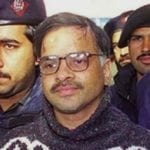


![10 Creepiest Photos Of Victims Taken By Serial Killers [DISTURBING] 10 Creepiest Photos Of Victims Taken By Serial Killers [DISTURBING]](https://listverse.com/wp-content/uploads/2018/09/Regina-Kay-Walters-featured-2-150x150.jpg)
